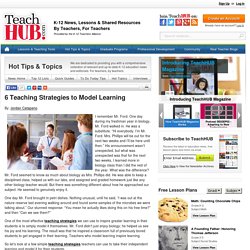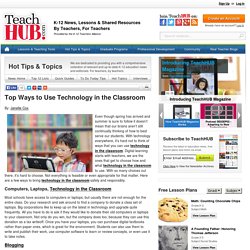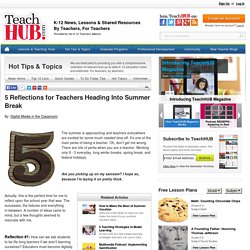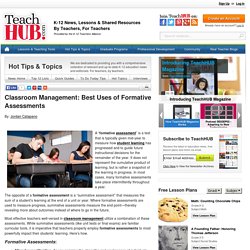

Educational Games To Improve Grades And Lower Test Anxiety. 10 Things Not to Say to Your Kids - The Kid Counselor™ When I think about all of the phrases, anecdotes, and sayings about the power of the spoken word I am reminded of how I changed my way of communicating with children upon learning Play Therapy principles.

I realize that using Play Therapy based language is a learned and practiced skill that requires time and effort, so I thought it would be helpful to share ten commonly used phrases parents say to their kids. I will also give the Play Therapy based alternative with a short explanation of why it is more effective. 1. No (running, hitting, yelling, fill in the verb)! Kids hear the word “no” far too frequently (Read more about that here). 2. I have spent a good deal of time on articles on the difference between Praise vs. 3. Children are programmed to question, analyze and wonder about situations. 4. This does two things. 5. I can’t tell you the number of times I hear that phrase when around other parents, even though it is highly ineffective. 6. 7.
6 Teaching Strategies to Model Learning. I remember Mr.

Ford. One day during my freshman year in biology, Mr. Ford walked in. He was a substitute. “Hi everybody. One day Mr. Top Ways to Use Technology in the Classroom. Even though spring has arrived and summer is sure to follow it doesn’t mean that our brains aren’t still continually thinking of how to best serve our students.

5 Reflections for Teachers Heading Into Summer Break. The summer is approaching and teachers everywhere are excited for some much needed time off.

It’s one of the main perks of being a teacher. Oh, don’t get me wrong. Classroom Management: Best Uses of Formative Assessments. A “formative assessment” is a test that is typically given mid-year to measure how student learning has progressed and to guide future instructional decisions for the remainder of the year.

It does not represent the cumulative product of learning, but is rather a snapshot of the learning in progress. In most cases, many formative assessments take place intermittently throughout a year. The opposite of a formative assessment is a “summative assessment” that measures the sum of a student’s learning at the end of a unit or year. Where formative assessments are used to measure progress, summative assessments measure the end point—thereby revealing more about outcomes instead of where to go in the future. Most effective teachers well-versed in classroom management utilize a combination of these assessments. 8 Metaphors for Understanding the Role of a Teacher. Transforming Digital Natives to Digital Citizens. I recently had the enriching opportunity to collaborate with author Marc Prensky whose term “digital native” has become the moniker for today’s students since 2001 when it was first coined.

Marc watched me teach a lesson and helped me guide my Mandell Prep students through a discussion regarding digital citizenship. A Tough Question In our reflections afterwards, he challenged me to rethink the way I was using technology to enhance the learning experience with this question: Are we using technology to do old stuff in new ways, or are we using technology to truly transform learning? Until he posed that question to me, I could have sworn I was doing the latter. In many ways I was, but the more I thought about it, the more I realized I probably was not doing enough of that transformative stuff.
The Ah-Ha Moment. 3 Ways To Create a Differentiated Learning PD Menu. There is no need to explain why teachers should have the same benefit of differentiated learning as students do.

Fundamentally, most people agree with the idea, but for some reason the differentiated professional development experience seems more the exception than the rule. Here are three juicy options to give teachers what they’re craving. Appetizer: Pick Strategically, Not Randomly Pre-assessments and formative assessments are critical to the DI experience. How would we know where to begin if we do not assess prior knowledge, student interest, and learning style? 1.) what teachers know. 5 Ways You Should Integrate Digital Citizenship Into Your Classes. Recently, I was told by a teacher that she doesn’t have time to teach digital citizenship because she has to cover too many other content-specific standards.

I get it... the Common Core-state tests-AP/IB/SAT/ACT madness eats up so much of our time. Still, there is no excuse for allowing students to enter into the digital world without a toolkit for not only safety but also success. Beyond that, there is such a wide range of options for truly integrating digital citizenship objectives that the argument given by teachers who claim a lack of time is simply unfounded. Here are a few ways we all can bring digital citizenship to our classrooms seamlessly. Digital Teaching Tip 1: Use an LMS Edmodo and Schoology are free learning management systems which provide teachers with platforms for discussions, resource sharing, grading, messaging and networking. Helping students develop their technology in the classroom Internet search...
Teacher PD: Using Differentiated Instruction to Teach Differentiated Instruction. We have all been there...sitting in the classroom of a professional development workshop or in the audience at a conference, listening to someone talk about engaged, student-centered, action-based, pers We have all been there...sitting in the classroom of a professional development workshop or in the audience at a conference, listening to someone talk about engaged, student-centered, action-based, personalized, differentiated (I'm sure I am missing several other descriptors) learning.

Top 12 Ways to Motivate Students. If there is one thing we know about kids, it’s that they have short attention spans and prefer now to later.

This is especially true at the beginning of the year. Teachers, more than any district or schoolwide programs, have the most power to know how to motivate students because they’re on the front lines. They can influence students in a way that kids can actually understand: here, now, today, in this room. ***Obviously, not enough can be said about parent involvement, but that’s a Top 12 list for another day*** How to Motivate Students In Your Classroom or School 1. Recognize work in class, display good work in the classroom and send positive notes home to parents, hold weekly awards in your classroom, organize academic pep rallies to honor the honor roll, and even sponsor a Teacher Shoutout section in the student newspaper to acknowledge student’s hard work. 2. Set high, yet realistic expectations. We offer up some new classroom activities for Groundhog Day, and a few twists...